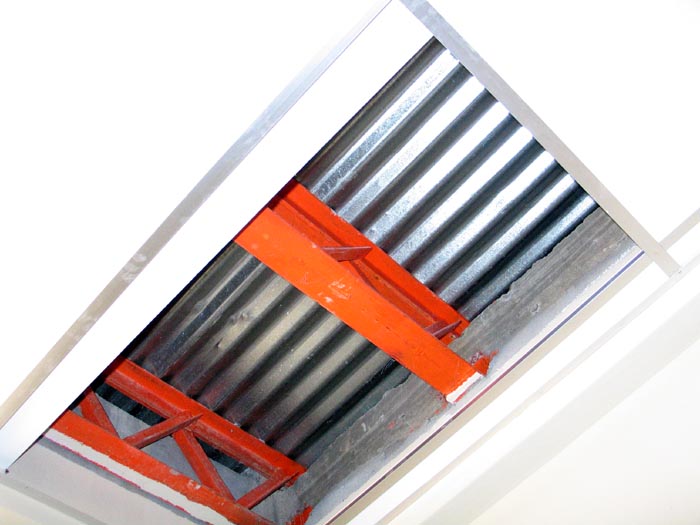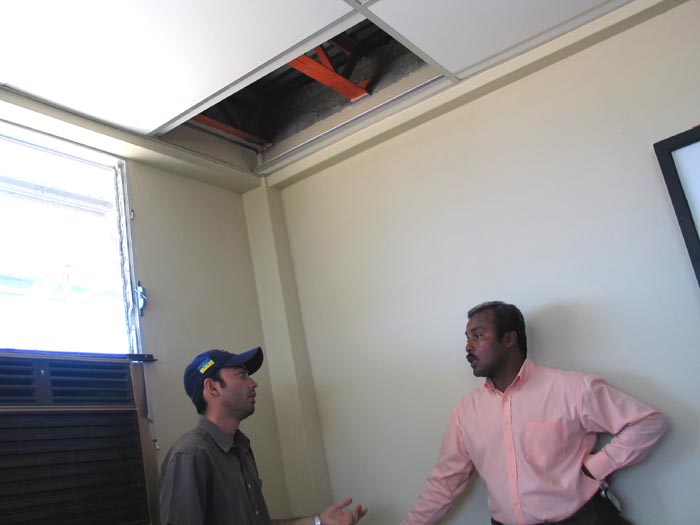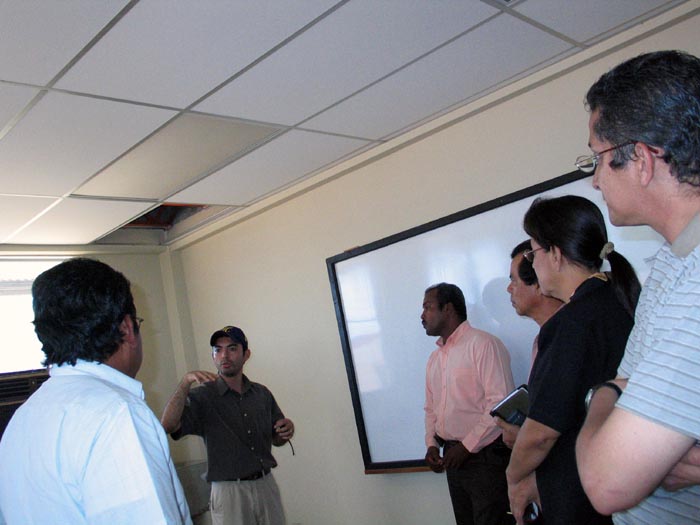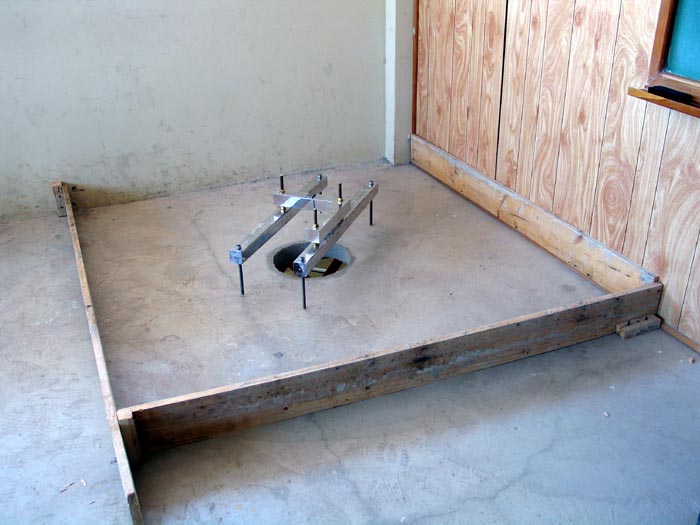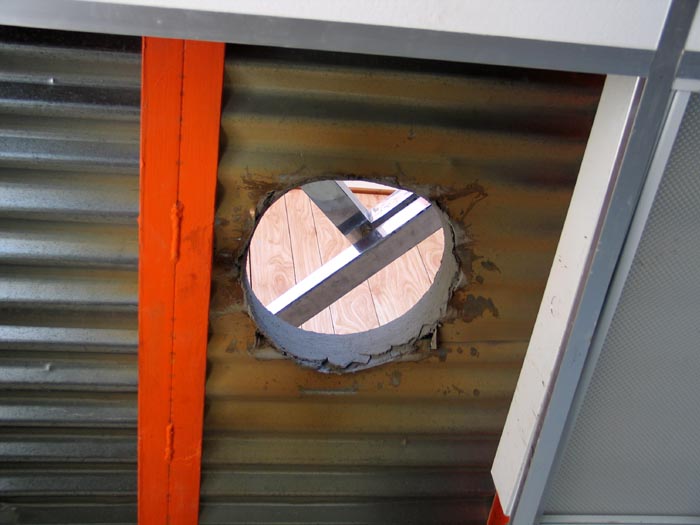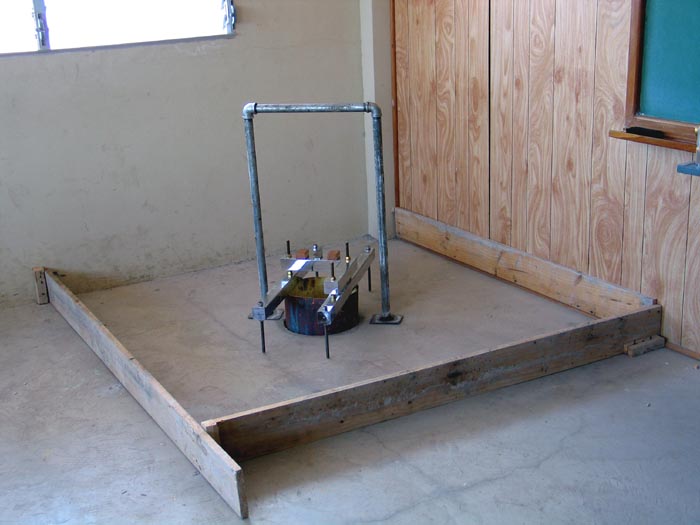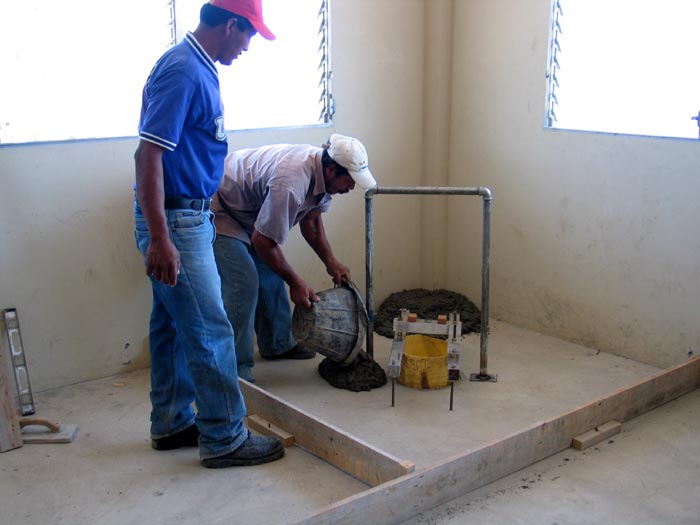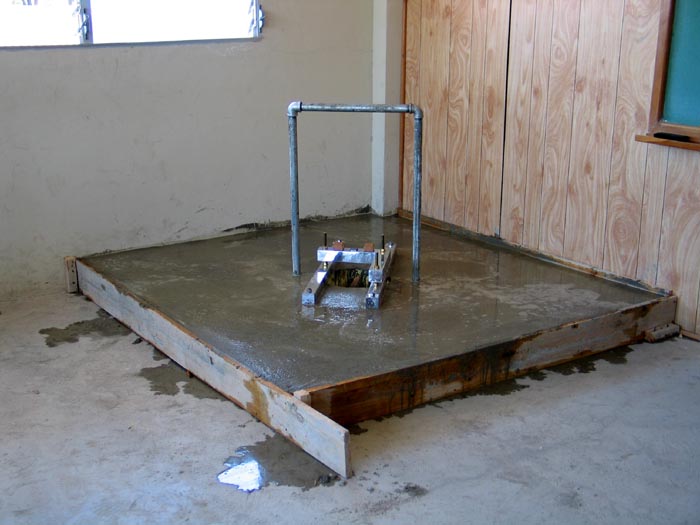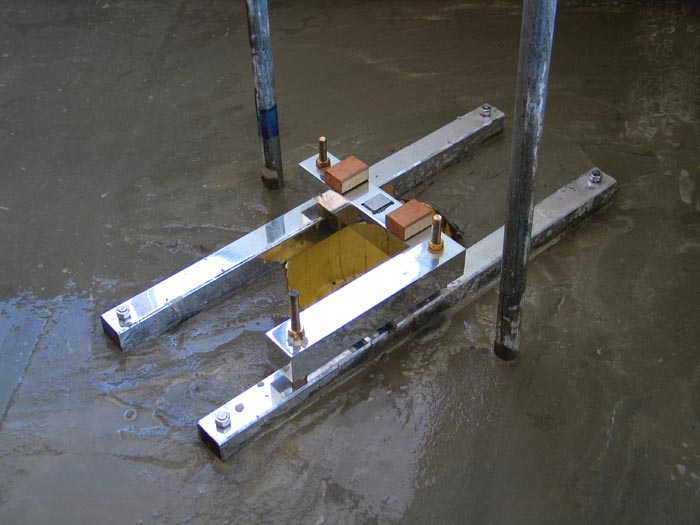The concrete has been poured today! Now we have two pendulum supports.
Actually, in the end, we have used a different and better pair of rooms (upstairs and downstairs) for the pendulums. These are proper laboratories, and here it is possible to separate the pendulums by about 5 meters, which we hope will be enough to prevent their vibrations cross-exciting one another; of course, we have to run a preliminary check to eliminate that possibility. A view of the place in the ceiling of the lower room for cutting one of the holes: Rodney, a professor of astronomy here at the UTP, is very interested in this research. Here he is, explaining the constructional details to the Director... ...and to everybody else... You can see the two structural concrete beams in the ceiling, extending away from the corner. A view of the corresponding corner in the upstairs room, ready for making one of the pendulum mounts. The corner is a structural concrete pillar, and those structural concrete beams extend along just below the two edges (but you can't see them in this photo). The architect has assured us that there will be no problem supporting a ton or more here. Here we have cut the hole, and built the basic mold, and one of the pendulum setups is in place: A closeup of the pendulum setup: The view from below: Now we have put in place the arch (for hoisting the pendulum upwards for changing the ball or flat) and the mold around the hole: And a closeup: Mixing the concrete - the hard way. Filling a bucket... ...and hoisting it up. There are two and a half tons to go this way! Starting the pouring: This one is nearly finished: Now it is completely finished - and a nice job too... (in fact, they are both finished). Guess what: the architect was right! the building hasn't fallen down! A close up of the completed pendulum mount: I can hardly wait till tomorrow for the concrete to set! Watch this space for more pictures. Each of these pendulum mounts is almost exactly half a cubic meter of concrete, so it should weigh about 2300 kilos. I think this support is better than Allais's - it's certainly more massive - but of course it suffers from the disadvantage, that the pendulum can only operate in one azimuth. Some may think that is a disadvantage - actually, I consider it a good feature. In any case, whatever be the effect of anisotropy of this support upon the pendulum, it will certainly be constant over time. Accordingly, this support is not actually particularly intended to be isotropic; rather, it is intended to be symmetrical about the initial azimuth of the pendulum, i.e. its release azimuth, which of course is straight into the corner. I think that this is sufficient. These pendulums are being set up to swing in azimuths 110o and 200o. The first justification is that the long side of the building is oriented at 155o, and we are at 45o to that, plus and minus. The second justification is that, actually, this turns out to be a good choice of azimuth; but the considerations are somewhat esoteric. In any case, I think that the choice that so many people have made, to swing one's pendulum in a N-S azimuth and see what happens, is basically the worst possible option, especially in the case of this eclipse, in which the conjoined Sun and Moon will be almost due West. Tomorrow we shall shift the focus of our operations to the room below. The next order of work is to build tables for reading off the motion of the pendulums, and to fix the release mechanisms into place. -o0o- Back to the What's New page. Back to our website main page.